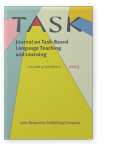Vol. 3:2 (2023) ► pp.273–304
Bangladeshi EAP teachers’ perspectives on task-based language teaching
We explored the extent to which academic English teachers from an English-as-a-Foreign-Language (EFL) context held beliefs that aligned with Task-Based Language Teaching (TBLT) principles, as well as their levels of receptiveness to using tasks in the classroom. In this mixed methods study, 41 tertiary-level EFL teachers from Bangladesh were invited to take a survey on TBLT and participate in follow-up interviews. We used convergent mixed methods analysis to triangulate the data and verify the findings. Results showed that participants agreed with TBLT principles from a moderate to high level, and consistently favored use of tasks over traditional activities, which included audio-lingual and form-based instruction. Moreover, teacher beliefs and practices seemed to have become further aligned with TBLT tenets in light of the COVID-19 pandemic and its consequential shift to online teaching.
Article outline
- Literature review
- Core crinciples of TBLT
- Definition of task
- TBLT vs TSLT
- Methodological principles underlying TBLT
- TBLT in EFL contexts
- TBLT in EAP courses
- The need for this study
- Core crinciples of TBLT
- Methods
- Participants
- Study context
- Questionnaire
- Likert-Scale Survey
- Preferred Activities Survey
- Background information
- Interviews
- Procedure
- Data analysis
- Results
- Results from quantitative analysis
- Descriptive statistics from Likert-scale survey
- Descriptive statistics from Preferred Activities Survey
- Results from qualitative analysis
- Thematic coding of Preferred-Activity Survey rationales
- Thematic coding of semi-structured interviews
- Further results
- Results from quantitative analysis
- Discussion
- Research question 1
- Research Question 2
- Impact of virtual classes on teaching approaches
- Implications and recommendations
- Limitations and future directions
- Conclusion
- Acknowledgements
-
References
